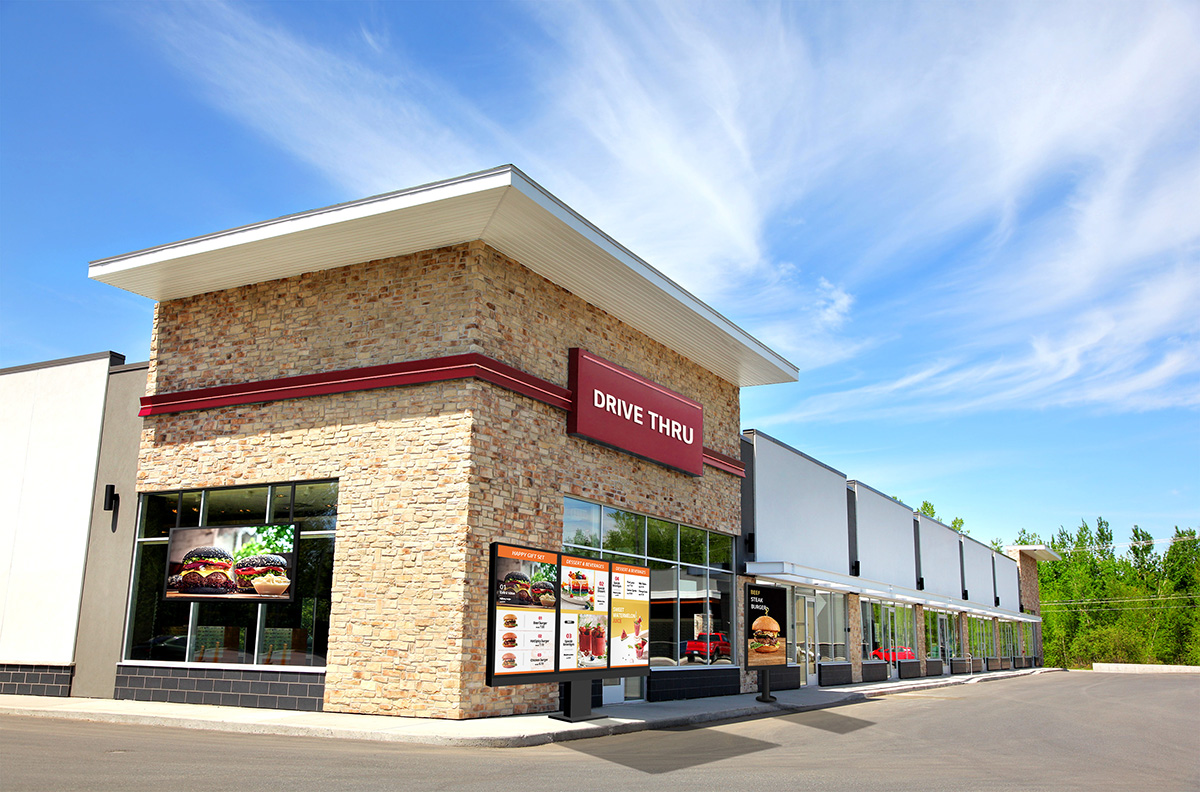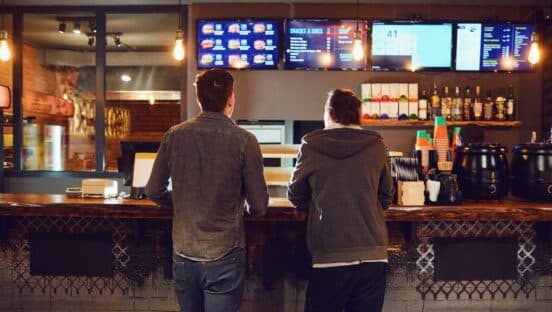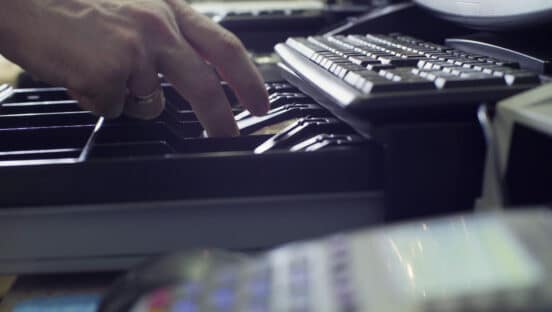Sponsored by LG Business Solutions.
Quick-service restaurants are increasingly using digital message boards to attract customers, and to present menu items to customers already in the drive thru lane or the storefront. With digital becoming the norm, restaurants with static menuboards run the risk of becoming irrelevant.
“Restaurants look outdated and obsolete if they are not implementing the new standard of technology, which is having digital menuboards inside and outside,” says Dan Smith, vice president of LG Electronics USA Business Solutions. “A lot of quick-service brands target younger customers, and because technology and social media are part of their everyday life, digital has become an expectation of this customer segment.”
Here, Smith explains three reasons why operators can no longer afford to rely on analog displays.
1. Regular updates
One of the main advantages of digital menuboards is how quickly they can be updated. This is pivotal when it comes to LTOs, as digital messaging can be changed to reflect when an item is on special, or sold out.
“Restaurants implementing integrated technology solutions gain the ability to spotlight preferred strategies, such as highlighting and driving LTOs, combo meals sales, or add-on sales,” Smith says. “Benefits also include more accurate alignment of menus to the inventory, resulting in improved consistency in messaging.”
Outdoor digital signage should not be overlooked, as it can function as a great, cost efficient way to advertise menu items in different dayparts.
2. Upselling Possibilities
Not only do digital solutions unify brand messaging at the click of a button, they also unlock the ability to employ targeted advertising, too. This is especially true as other technologies advance, allowing synchronization between digital platforms.
“As mobile ordering becomes more of a standard, it opens up opportunities for push advertisements and promotions that drive customer traffic, and the potential for storewide or even chain-wide updates to digital content for consistency in messaging and pricing,” Smith says.
Messaging can also be cycled, to present more engaging and varied information to patrons. This creates more chances to upsell to customers prior to and during their order.
3. Cost efficiency
Digital menuboards are an investment that save brands money in the long run. Whereas static menuboards cost money to create and update––and that process may take days or weeks––digital menuboards are updated for free at a moment’s notice. The digital route is also more cost effective when you consider the one-time installation and low maintenance.
“For restaurants that are already operationally burdened, the operational gains of less printing and shipping of static materials are greatly beneficial,” Smith says. He also believes the low-cost branding opportunities presented by digital transformation cannot be overstated. “The improved customer interactions serve to bolster the image of a restaurant, and thus the bottom line. Advanced display solutions from LG Business Solutions and our integration partners are helping quick-service restaurants––from small- and mid-sized operations, to large chains––enhance the customer experience and achieve tangible sales and profitability benefits.”
To learn more about advanced display solutions, visit LG’s website.
By Charlie Pogacar.













